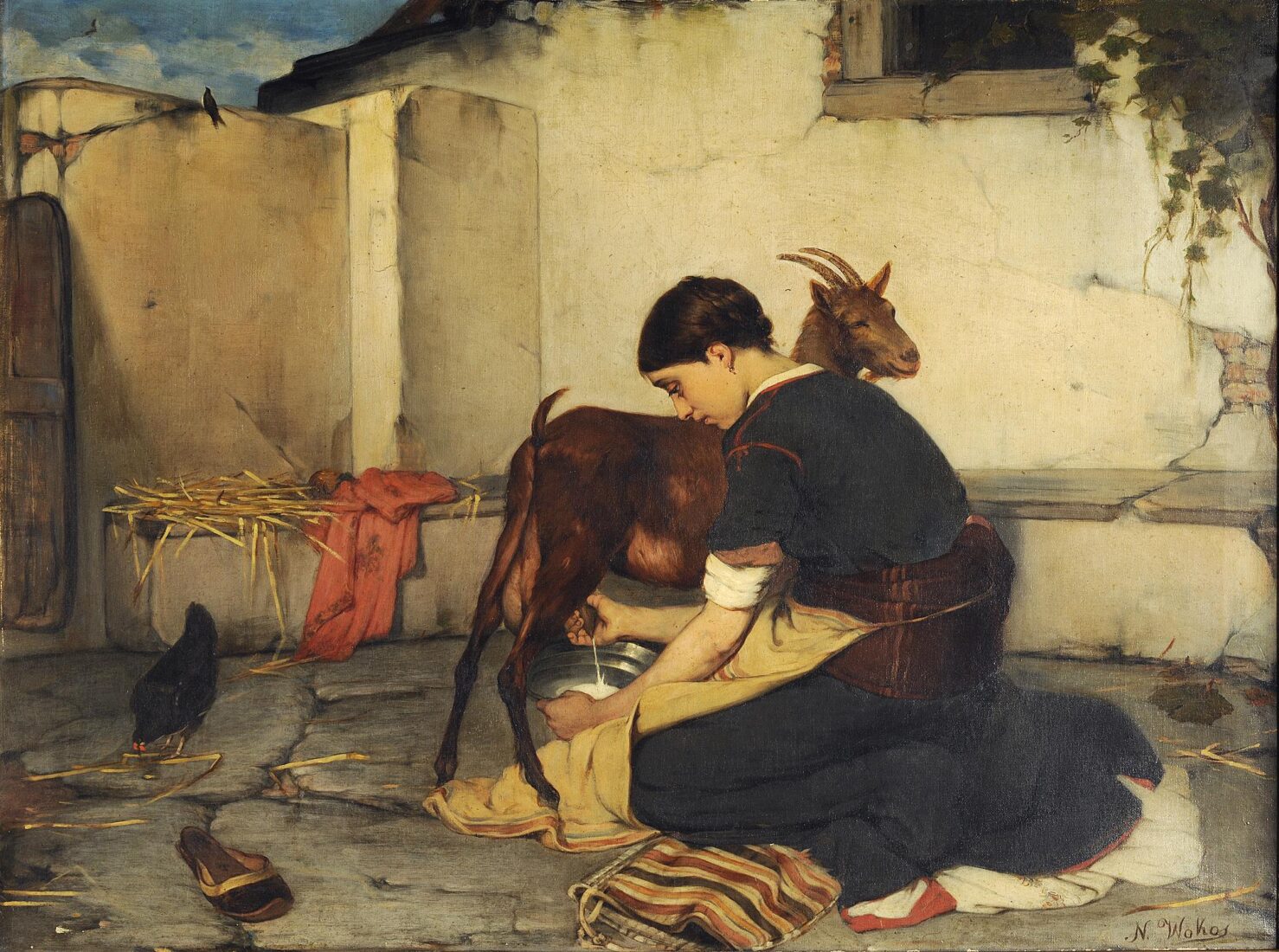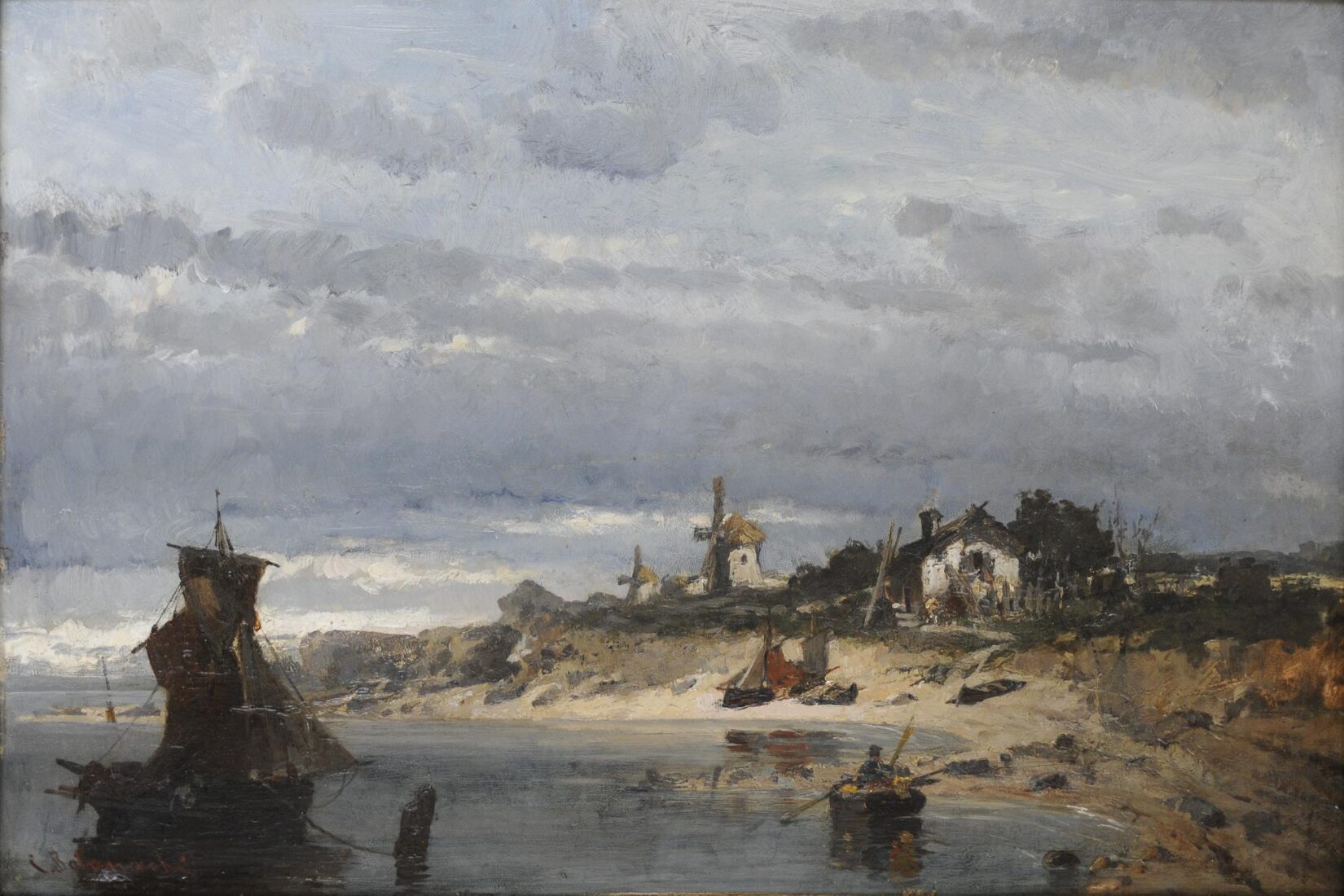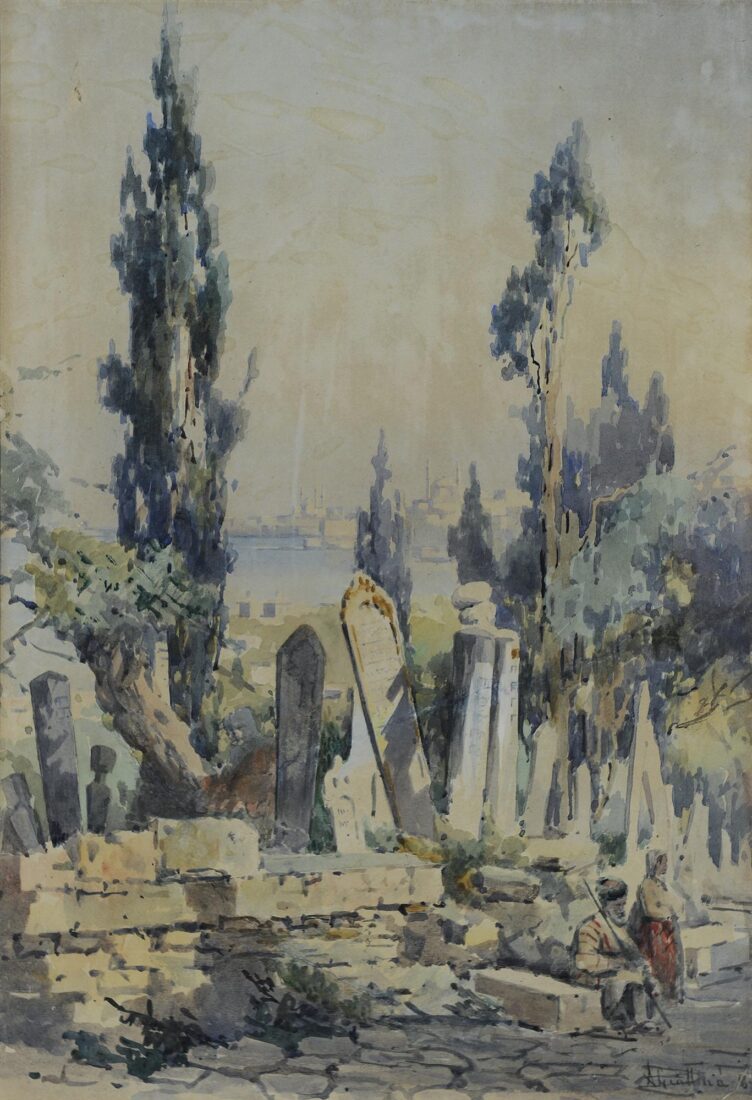

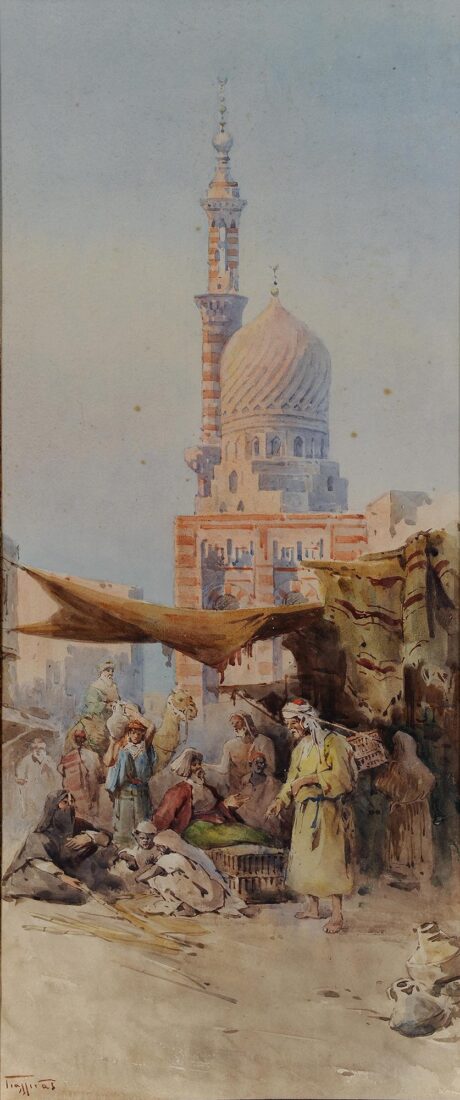
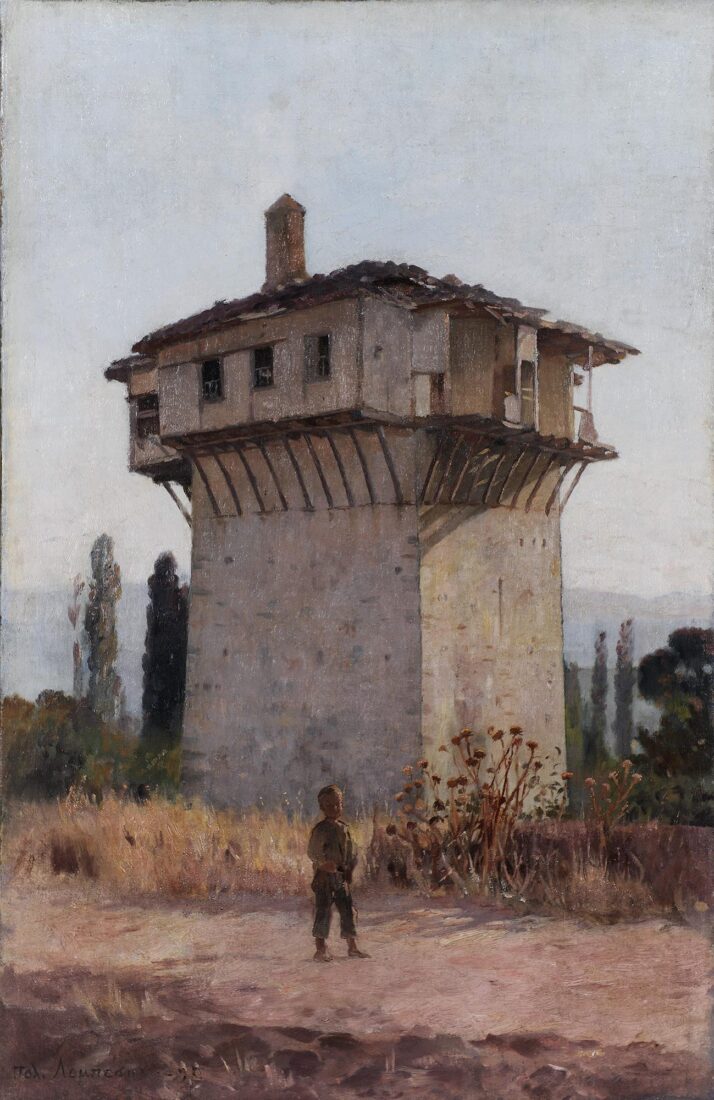
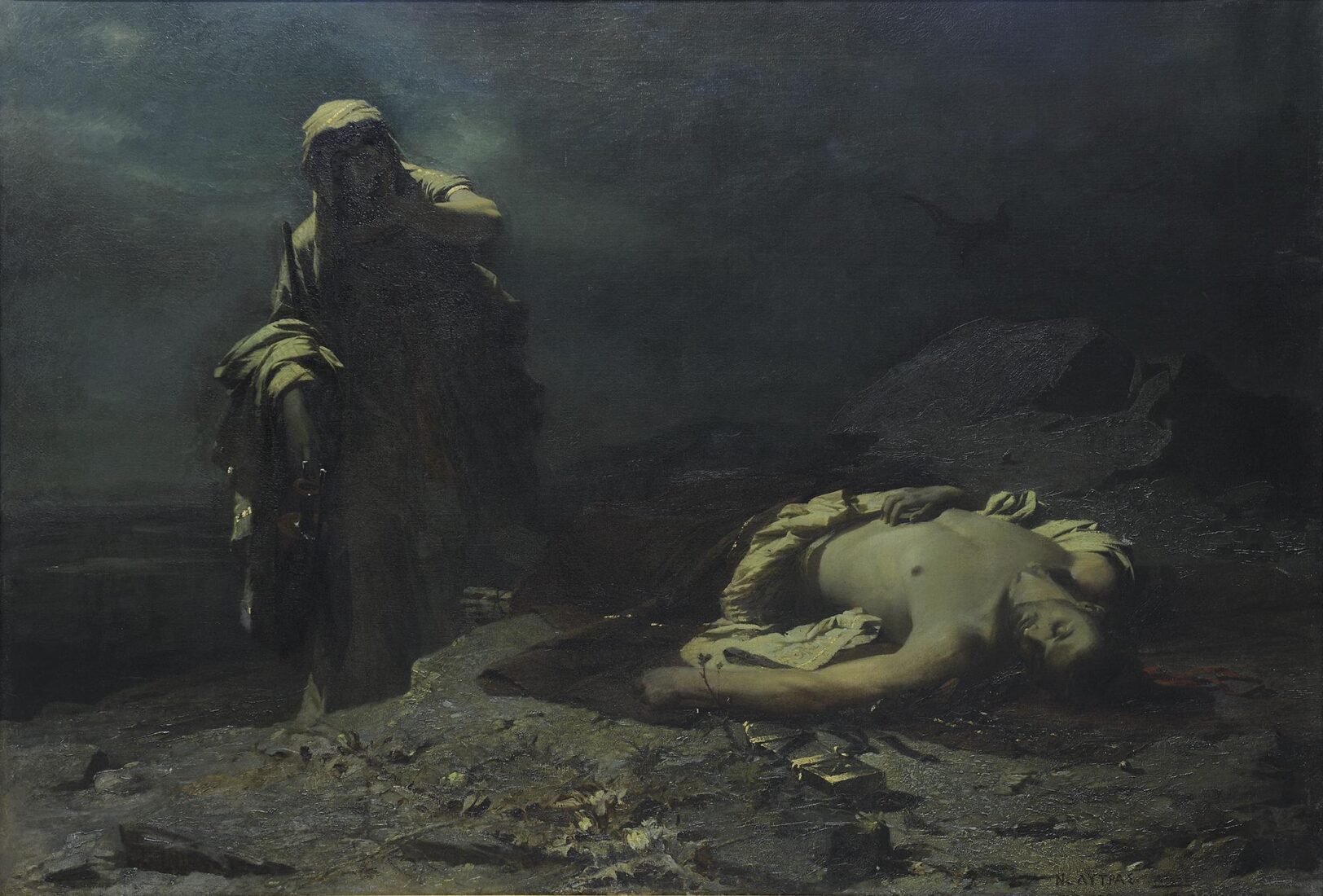
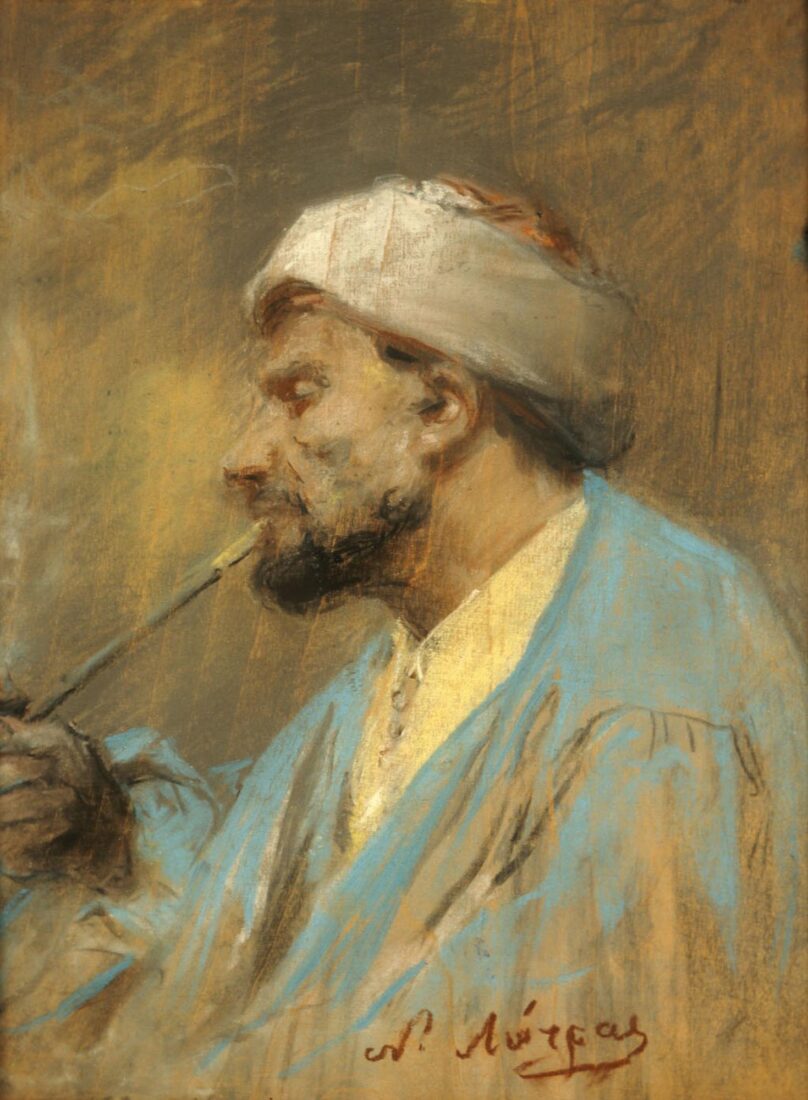
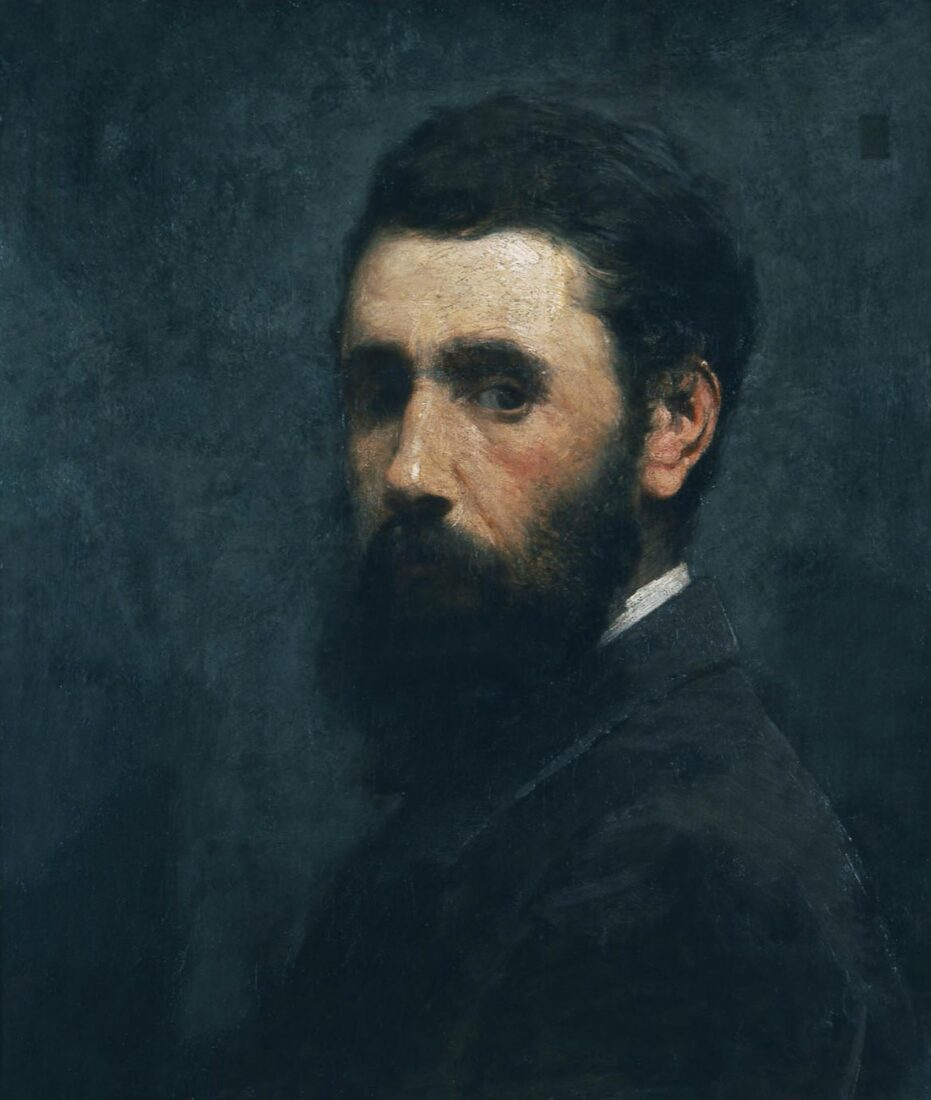
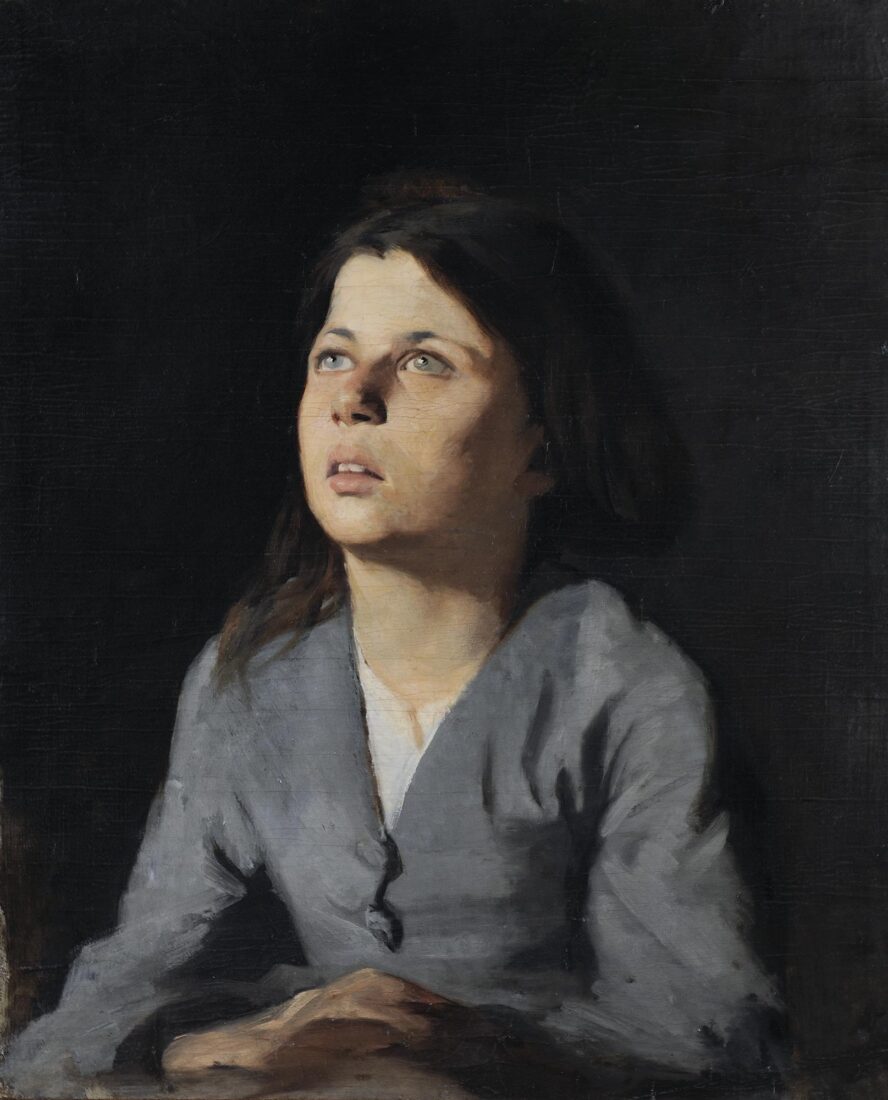
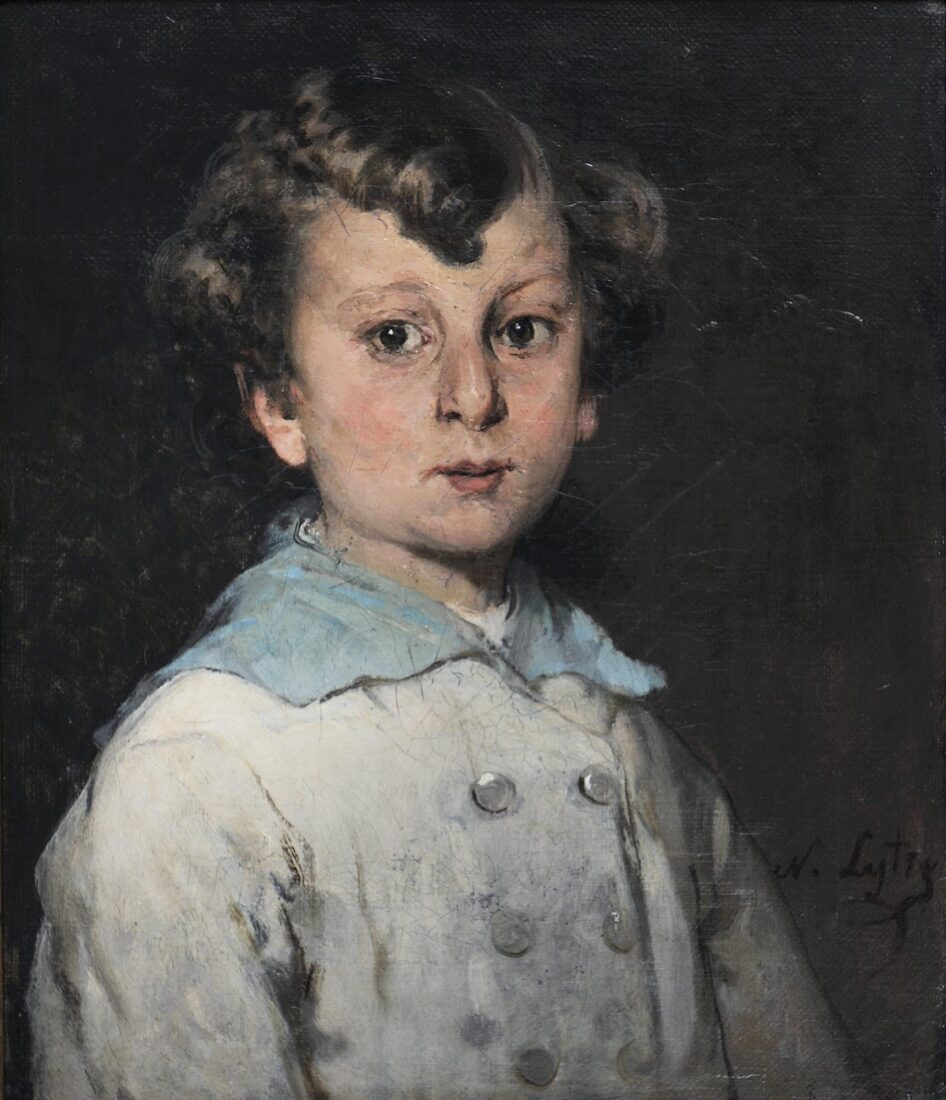
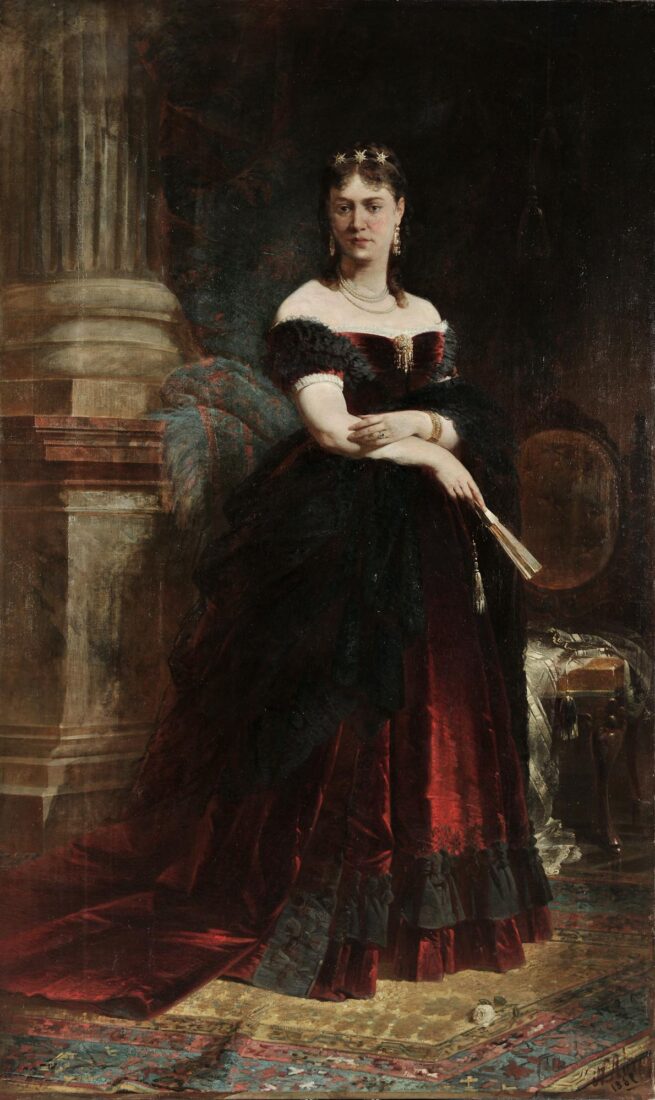
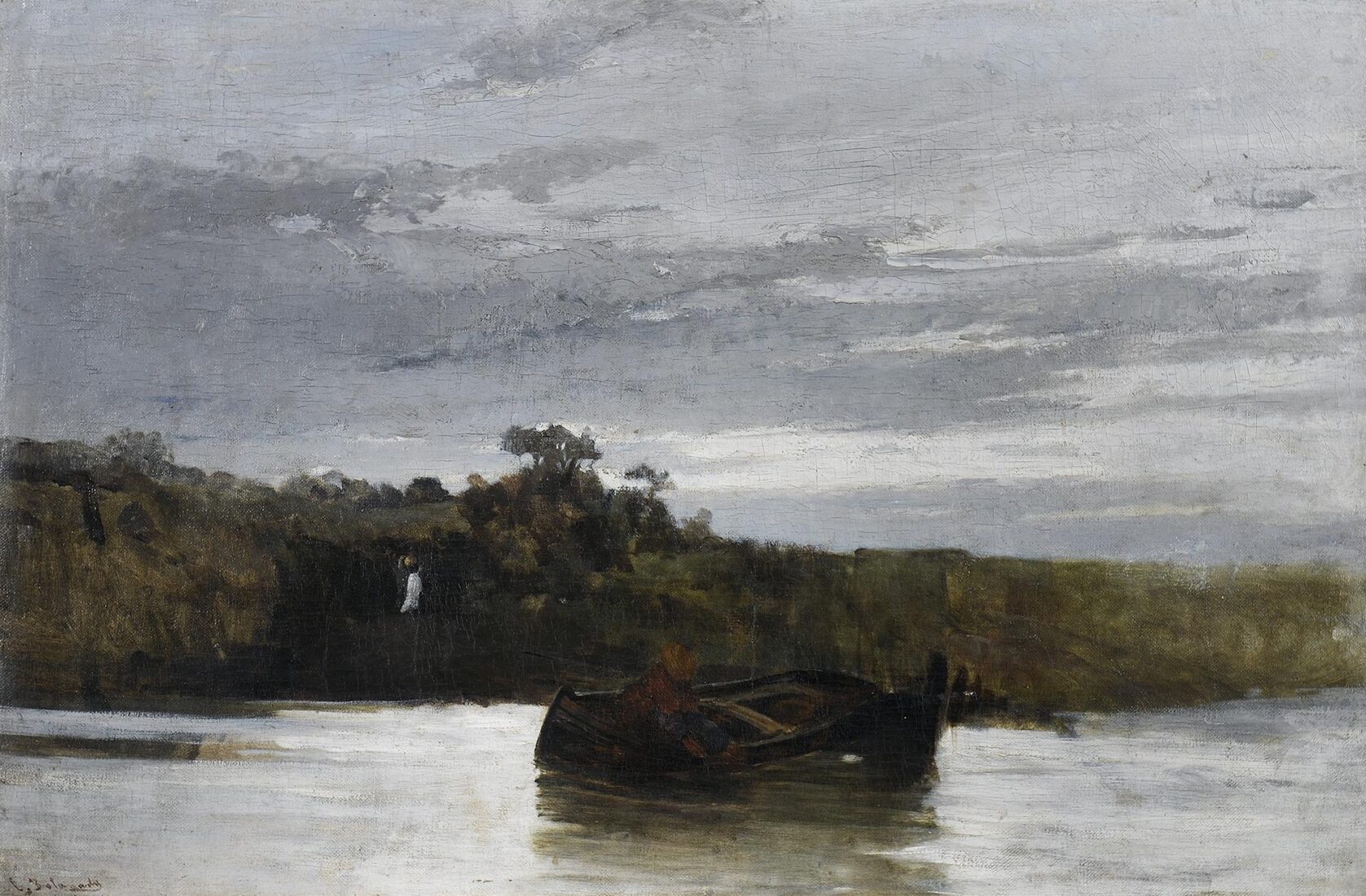
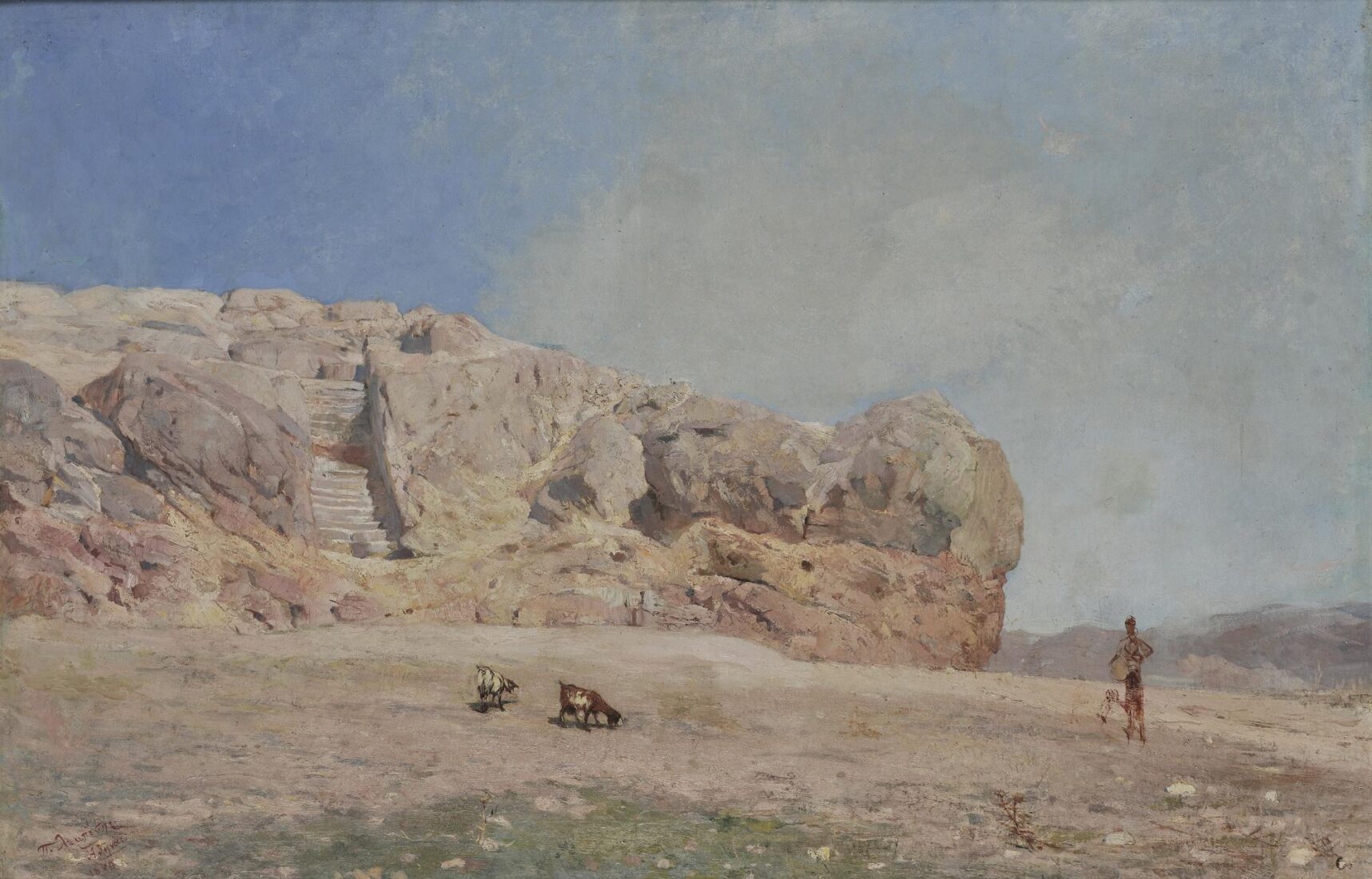
This painting and the “Areios Pagos” by Periklis Pantazis were produced during the same year, 1880, and their makers were friends, they may well have been made at the same time, as was the habit of Impressionist painters. It is interesting to compare the two paintings in order to find out how two painters coming from two different schools – Lembesis from Munich and Pantazis from Brussels – approached the historical rock of the Areios Pagos on a summer day. Let us first see the elements they have in common: the two paintings share the same dominant colour tonality, based on the interplay of gold-yellow ochre on the rock and grey-blue in the sky. In both paintings, shades are purple. Therefore, both painters are familiar with the Impressionist “recipe.” So, where is the difference to be found? In “writing,” in brushwork, and in rendering volume. Lembesis’ writing is meticulous; he draws and captures every detail in the subject. The rock, on the other hand, maintains all of its compactness, it is solid. On the other hand, let us see how Pantazis, who is more of a true impressionist, approached his subjects. His technique is utterly different. Here, free brushwork can be seen at work, “building” the form. The rock is not trapped within a closed outline; rather, it is an open form. Also note the sky and the clouds, rendered in the most agile brushwork. In the dry Attic light, of course, forms maintain their shape, they are easy to draw clearly. One is therefore at a loss as to which painting is the most faithful interpretation of reality.
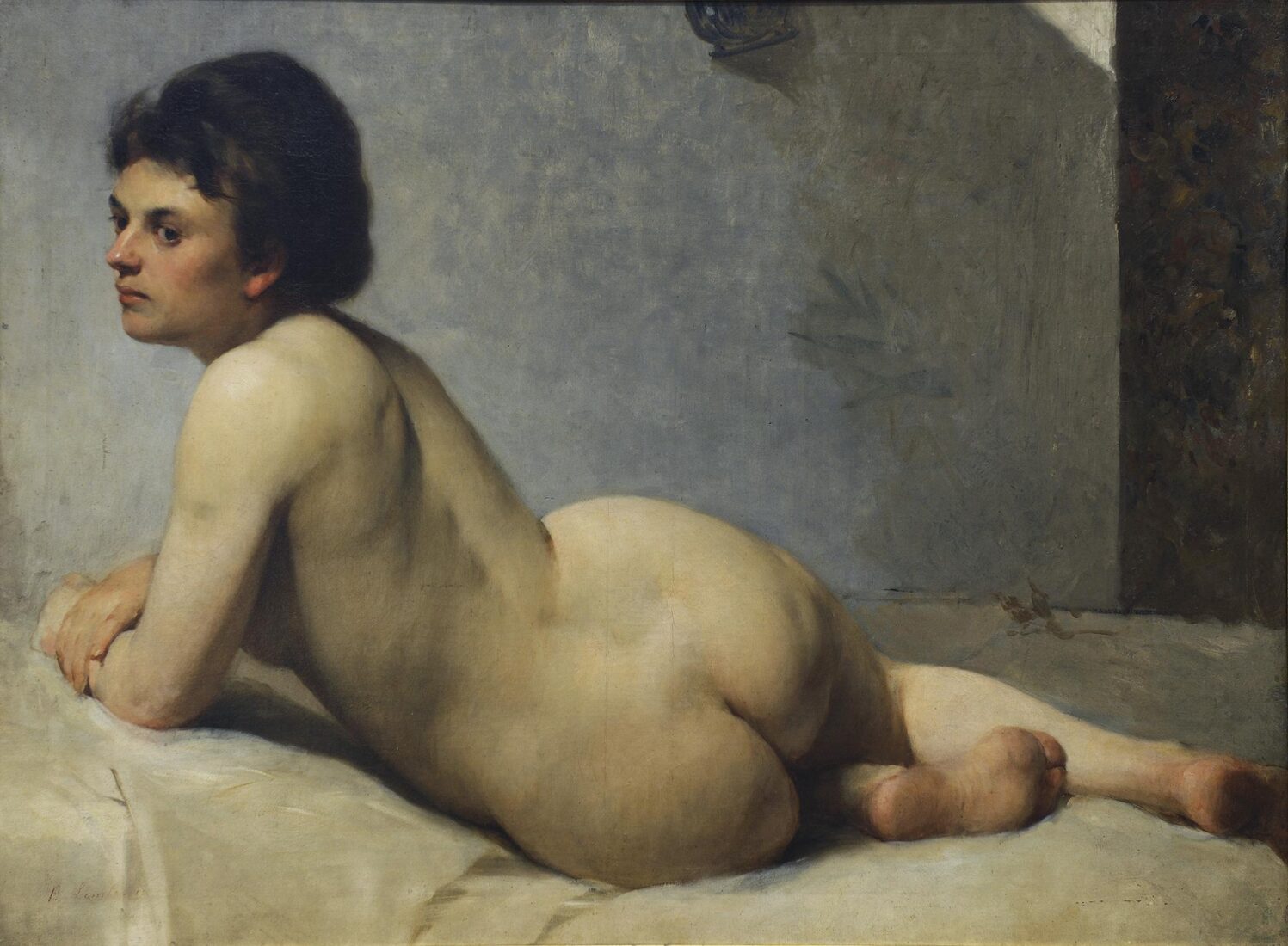
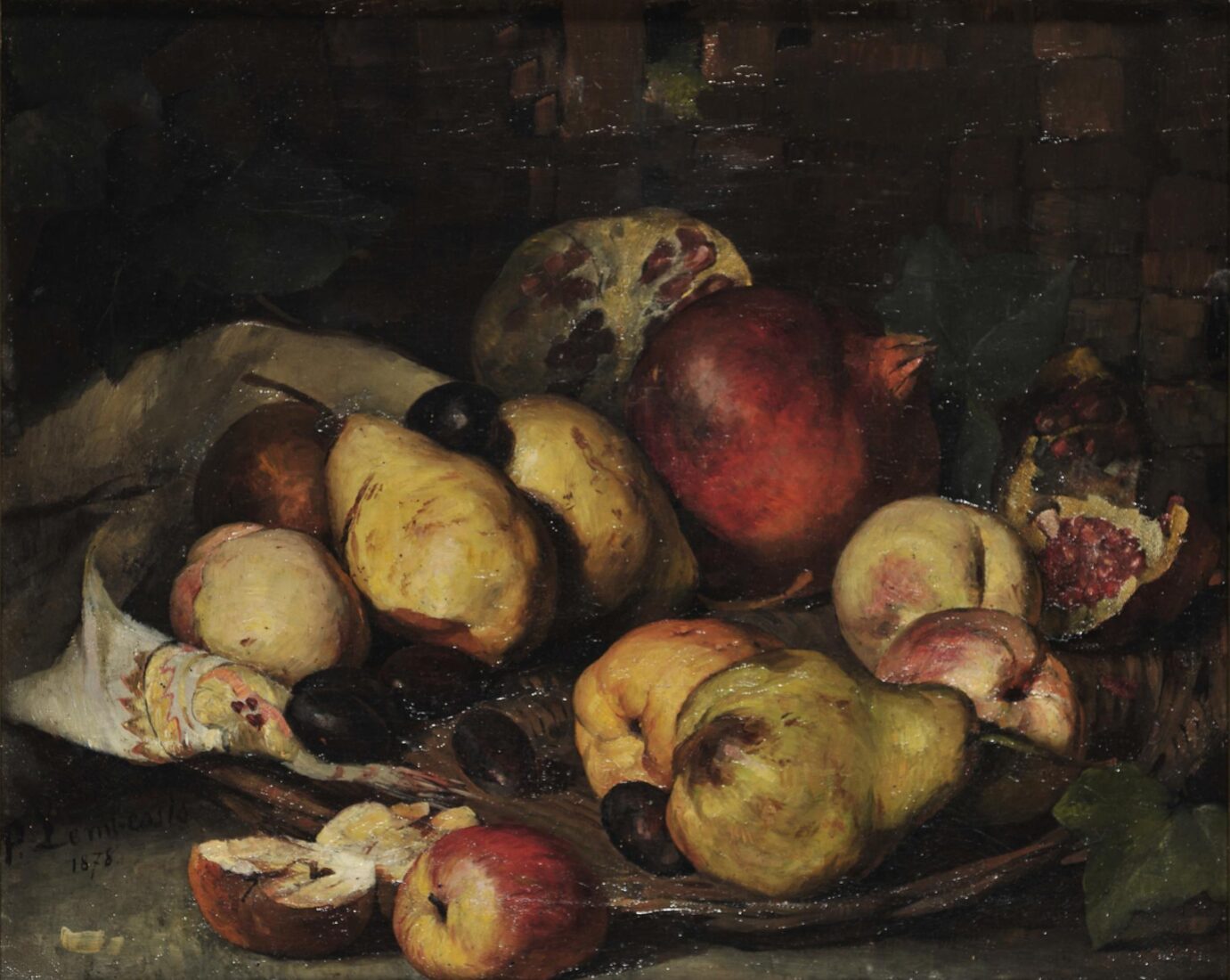
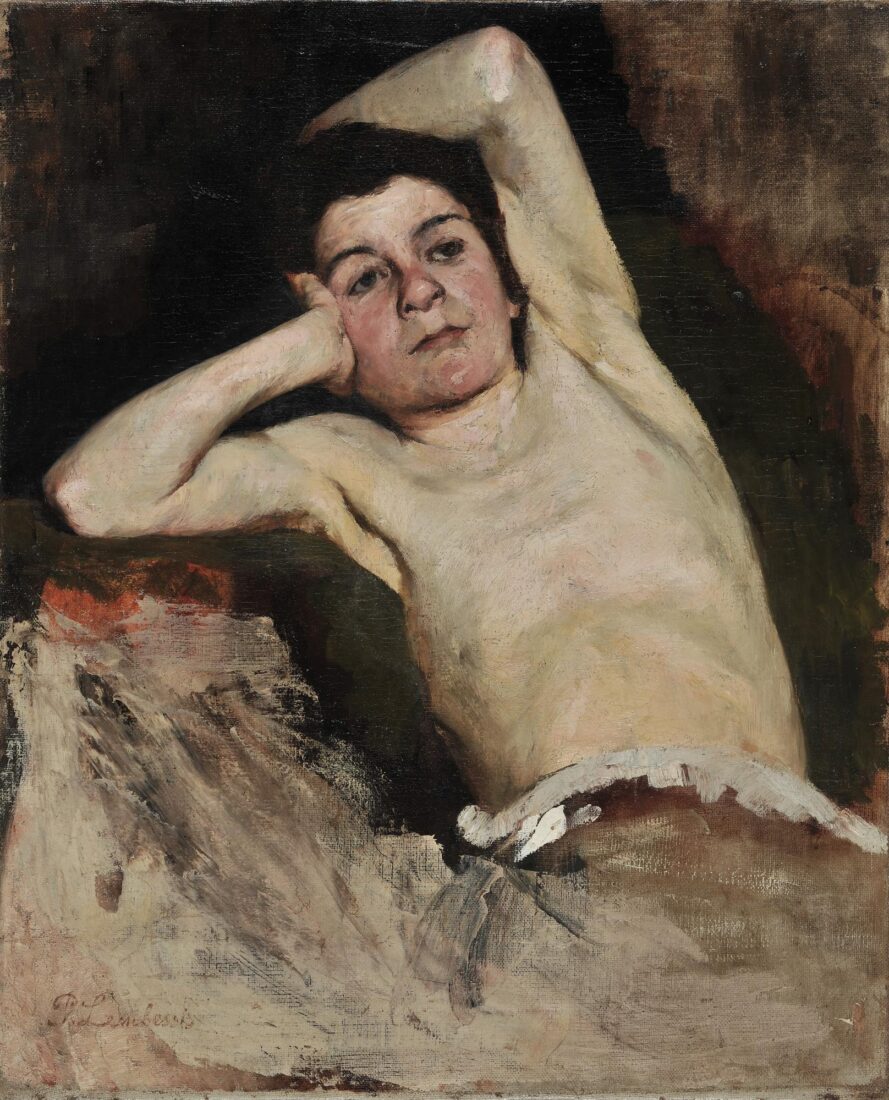
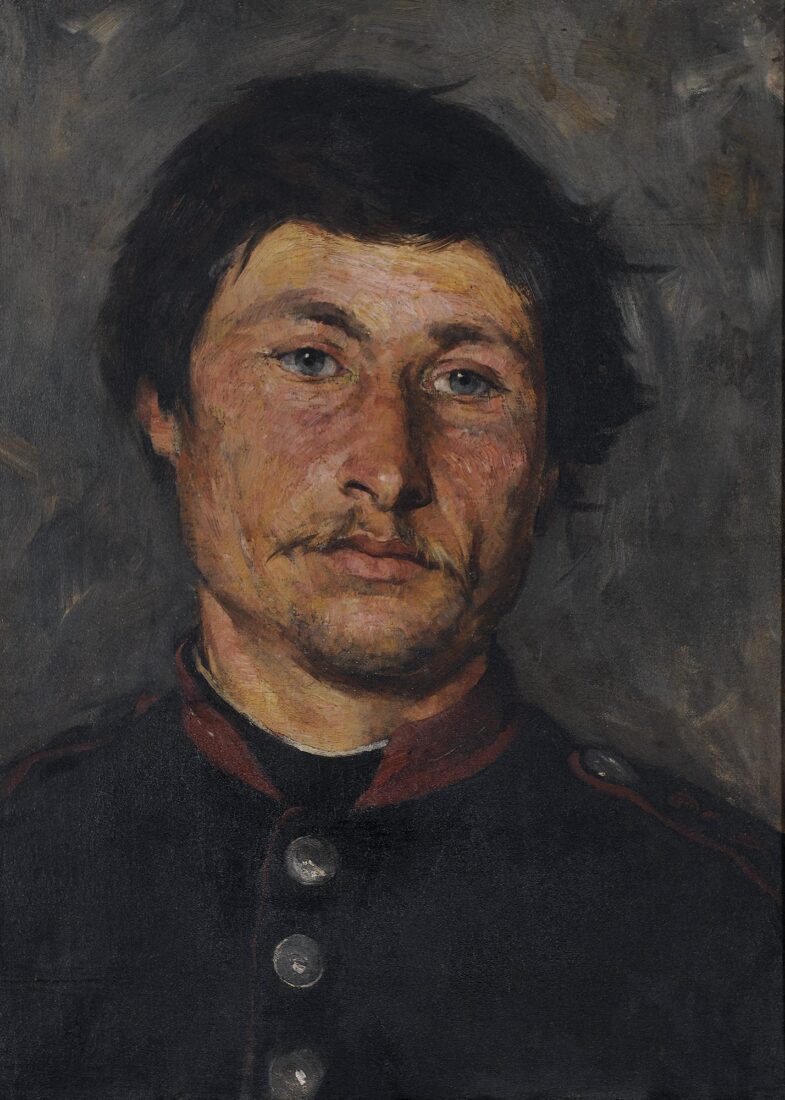
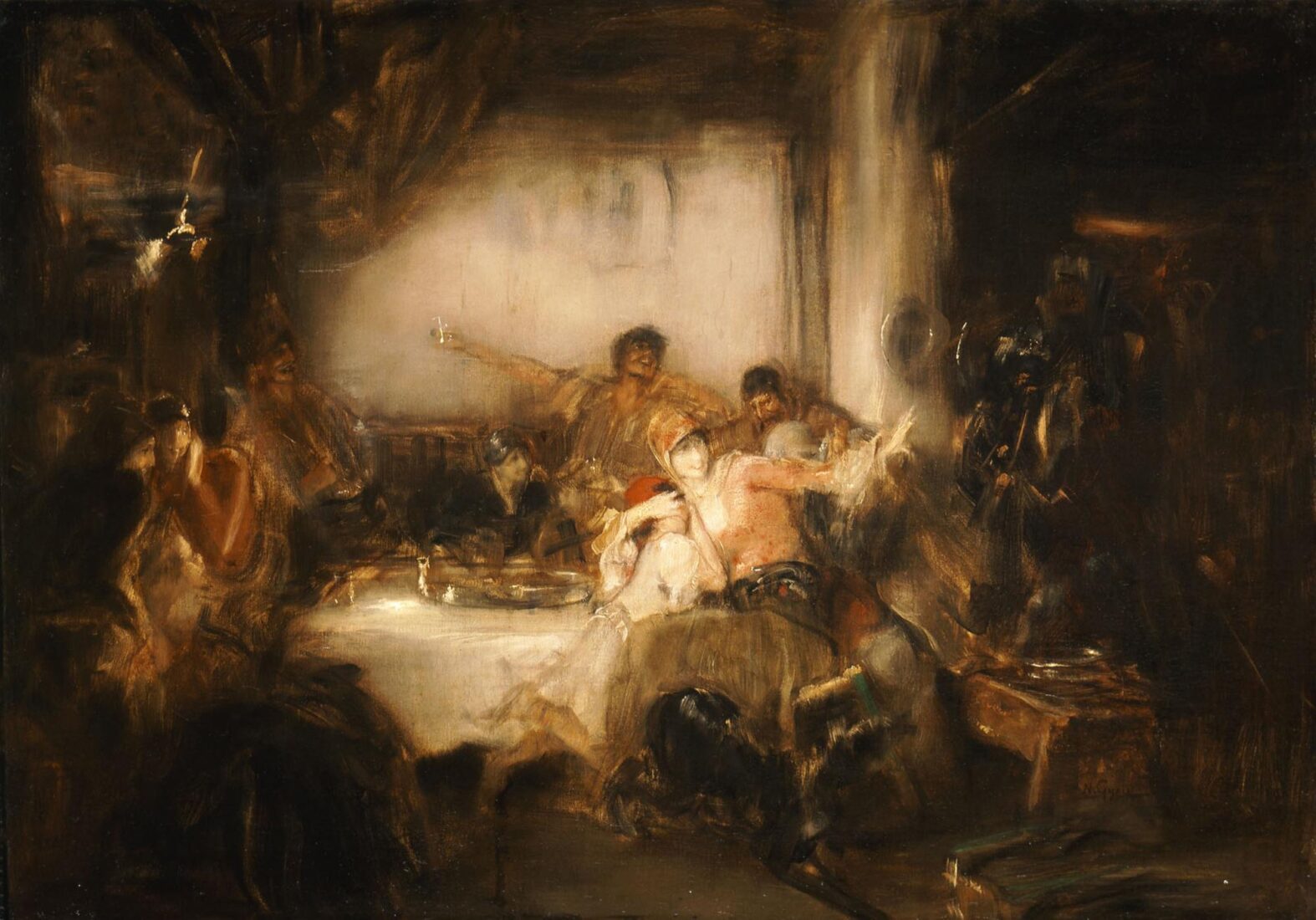
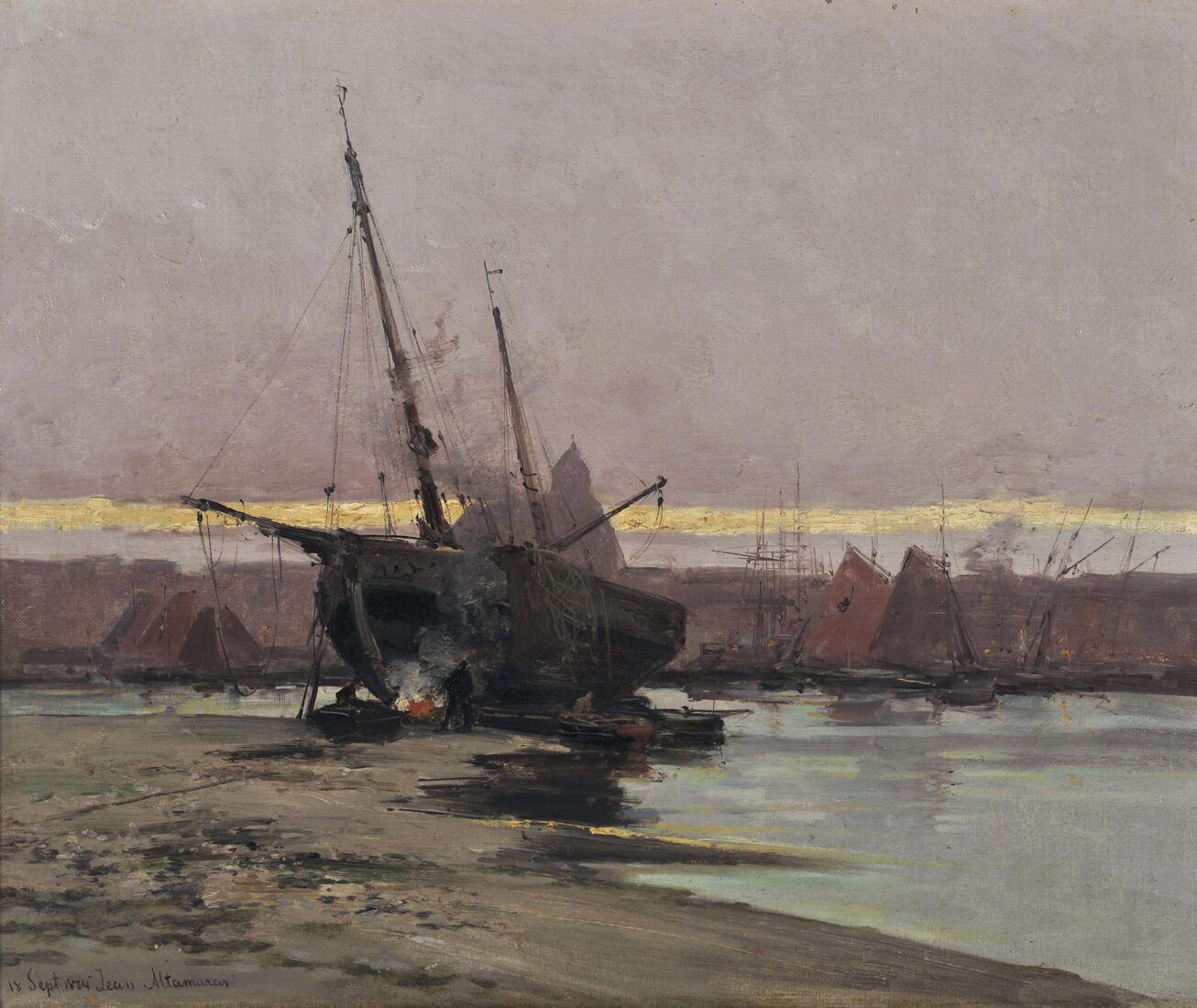
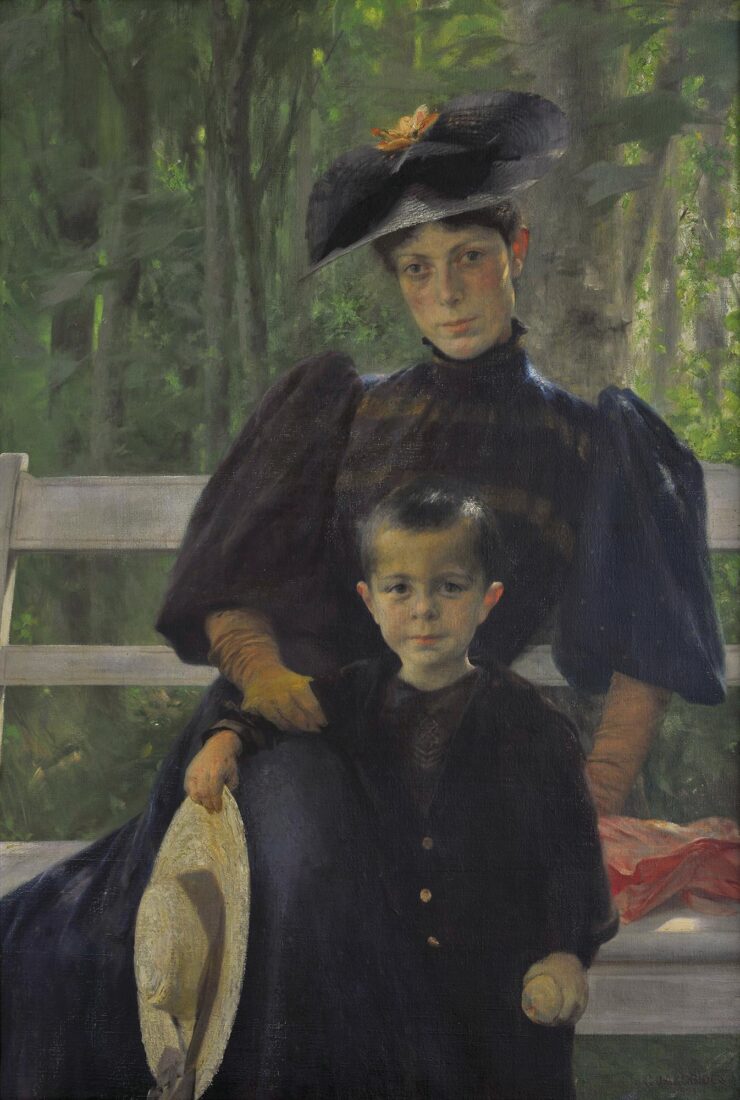
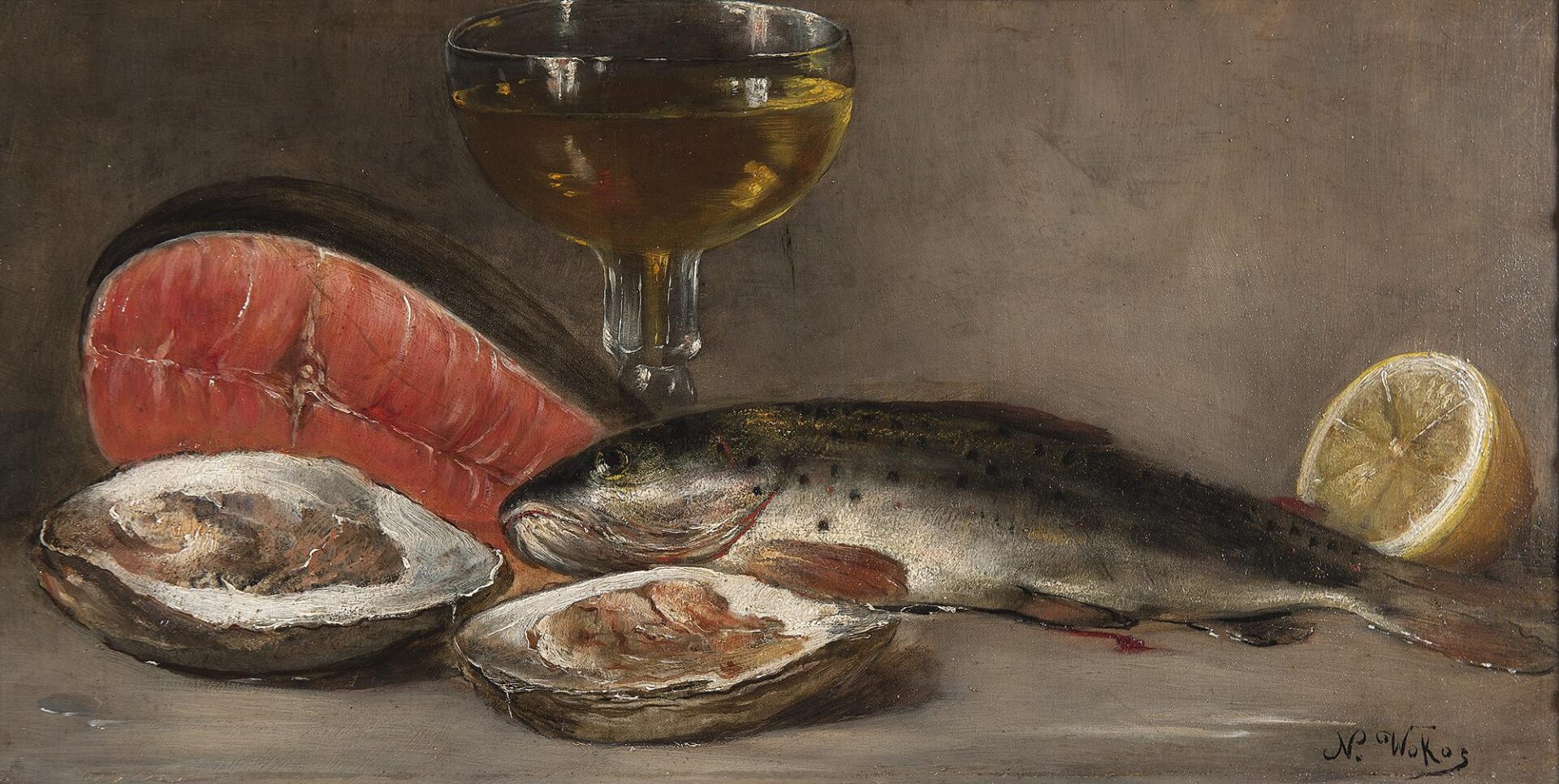
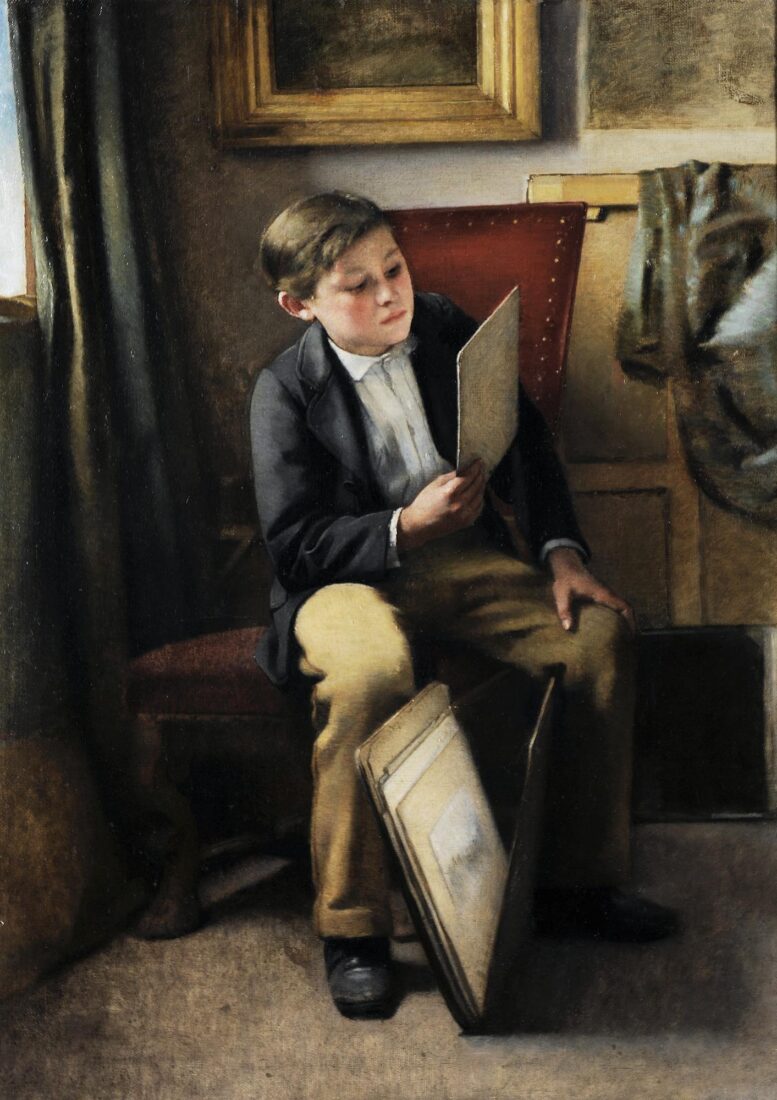
A talented artist, Ioannis Zacharias died at an early age. He left few yet high-quality works. The boy portrayed in this painting is most probably a student at the School of Arts, as it was possible to enrol at a very young age at the time. The interior in which he is seated is encircled by paintings and frames, while at his feet there is an open folder, from which he has taken out a drawing and examines it. This is a seminal work. First of all, for the seriousness with which the artist regards art education at such an early age. Moreover, it is also a work of artistic importance. The light entering through the window on the left caresses the forms and softens the outlines. Neither sharpness nor hard lines are anywhere to be seen. The colours strike beautiful and original harmonies in ochre, green and brown. It is a work of silence and recollection, expressed both through its subject and the plastic means used to interpret it.
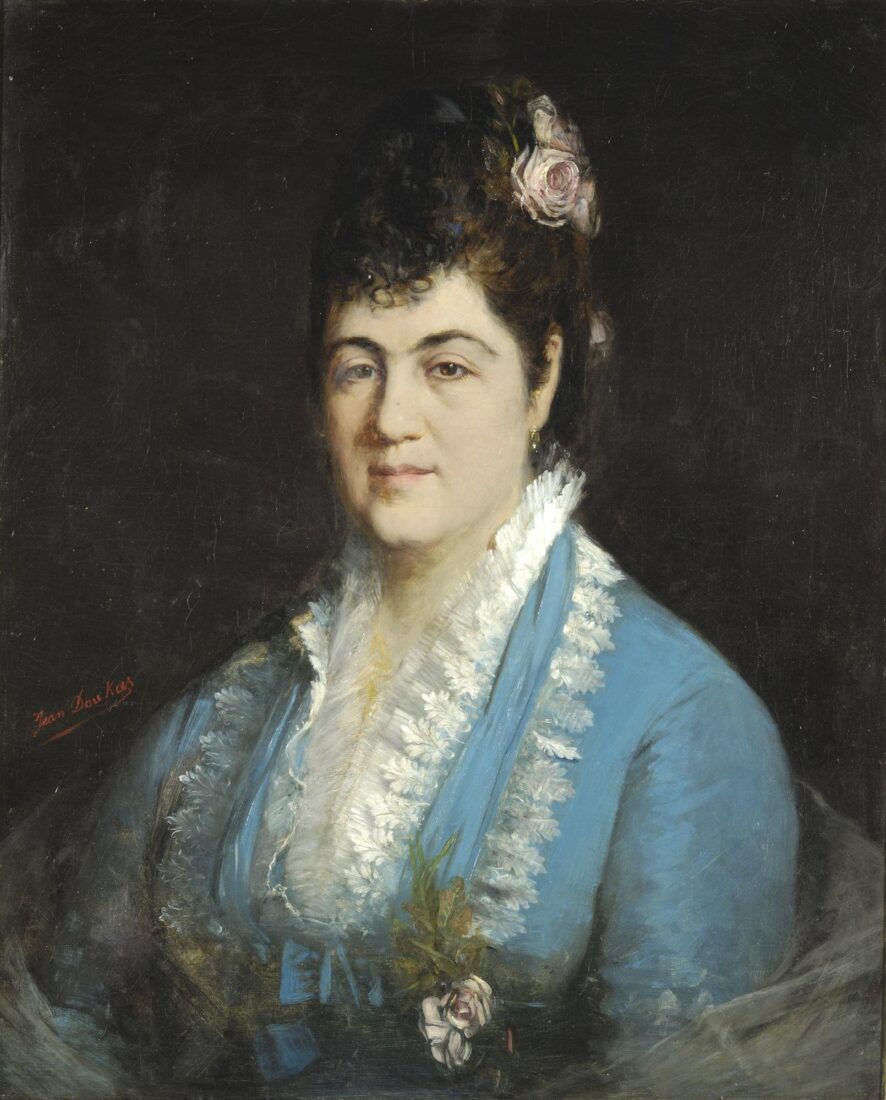
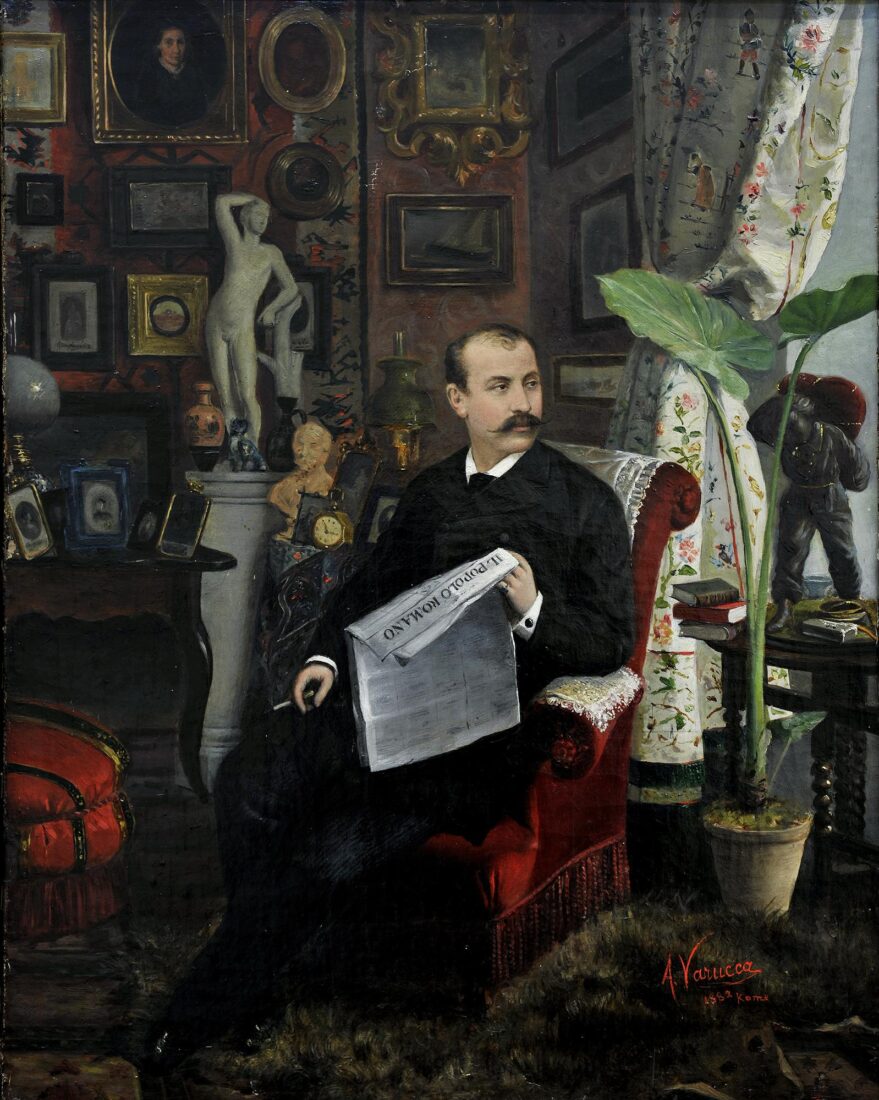
This small work is a characteristic example of the wealthy bourgeois as well as of bourgeois portraiture in the latter half of the 19th century. In a hall lined with paintings, statues, furniture, rugs, an elegantly dressed bourgeois has paused reading his foreign newspaper and smoking his cigar in order to look to the right, perhaps towards an invisible to us door. The painting is skilfully and meticulously executed, but it is of more interest to us here for its content and meaning than for its quality, although the latter is very high nevertheless.
